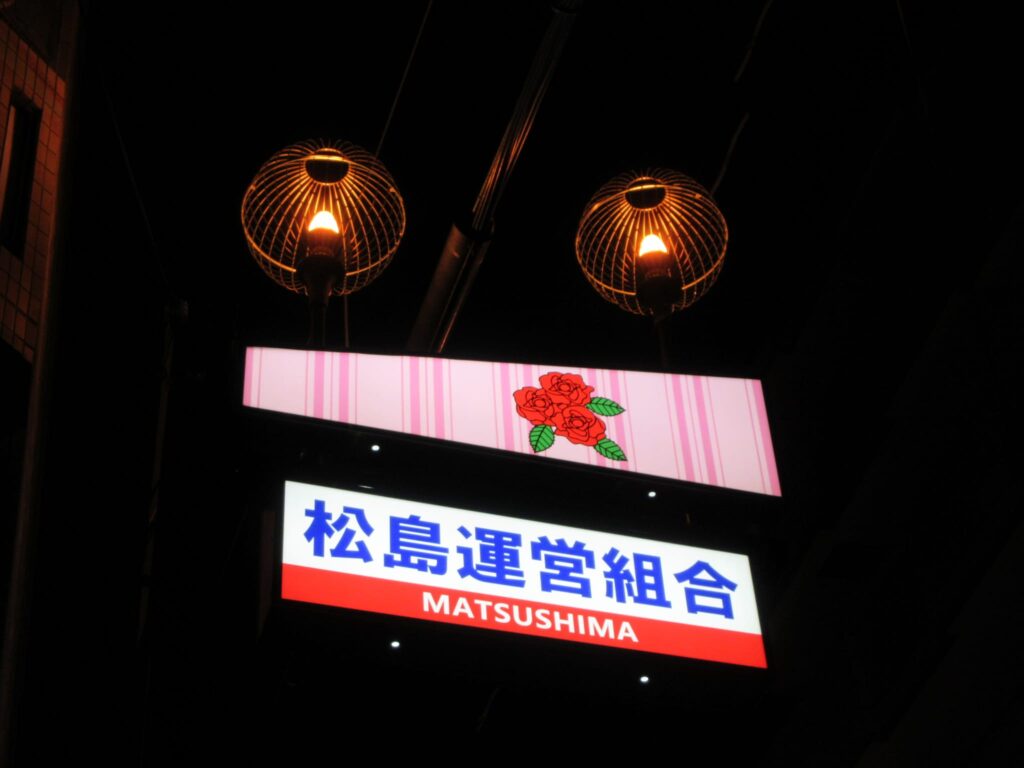When it comes to Japan’s adult entertainment scene, few places carry the historical weight and cultural intrigue of Matsushima Shinchi. Located in Osaka, this district is one of the last surviving yūkaku (licensed pleasure quarters) in Japan, offering a rare glimpse into a world that once thrived in cities like Tokyo’s Yoshiwara and Kyoto’s Shimabara.
For foreign visitors, Matsushima Shinchi is more than just a nightlife destination—it’s a living museum of Japan’s Edo-era traditions, where the art of hospitality and human connection takes center stage. In this guide, we’ll explore the history, culture, and unique charm of Matsushima Shinchi, along with tips for visiting respectfully and responsibly.
What Makes Matsushima Shinchi Special?
Matsushima Shinchi is one of Japan’s few remaining yūkaku districts, where the traditions of the Edo period (1603–1868) are still alive and well. Unlike modern red-light districts, Matsushima Shinchi retains an old-world charm, with narrow streets, traditional wooden buildings, and lantern-lit doorways.
Here’s what sets it apart:
- Historical Significance: Matsushima Shinchi has operated as a licensed pleasure quarter for over 400 years, making it a cultural treasure.
- Intimate Atmosphere: The district is small and walkable, with a cozy, neighborhood feel.
- Authentic Experience: Unlike larger, more commercialized districts, Matsushima Shinchi offers a more personal and traditional experience.
A Brief History of Matsushima Shinchi
Matsushima Shinchi’s origins date back to the early 17th century, when it was established as a licensed pleasure quarter under the Tokugawa shogunate. During the Edo period, yūkaku districts like Matsushima Shinchi were hubs of art, culture, and entertainment, where courtesans (oiran) entertained wealthy merchants, samurai, and artists.
Over the centuries, Matsushima Shinchi has weathered wars, economic shifts, and changing social norms. Today, it stands as a testament to Japan’s ability to preserve its cultural heritage, even in the face of modernization.
Navigating Matsushima Shinchi: What to Expect

1. The Layout
Matsushima Shinchi is a compact district, with around 30 establishments lining its narrow streets. Each venue is a ryotei (traditional Japanese restaurant) or ochaya (teahouse), where clients can enjoy drinks, conversation, and companionship.
2. The Experience
Visiting Matsushima Shinchi is like stepping back in time. Here’s what a typical visit might look like:
- Arrival: You’ll be greeted by a nakai (hostess) who will guide you to a private room.
- Companionship: A geisha or maiko (apprentice geisha) will join you for conversation, games, and drinks.
- Entertainment: Depending on the venue, you might enjoy traditional performances, such as dancing or shamisen music.
- Farewell: Your visit ends with a warm send-off, often accompanied by a small gift or token of appreciation.
3. The Rules
Matsushima Shinchi operates under strict guidelines to preserve its traditions and ensure a respectful atmosphere. Key rules include:
- No Photography: To protect the privacy of workers and clients, photography is strictly prohibited.
- Respectful Behavior: Loud or disruptive behavior is frowned upon. The emphasis is on quiet, intimate interaction.
- No Explicit Services: Like all yūkaku districts, Matsushima Shinchi focuses on companionship and entertainment, not physical intimacy.
Tips for Foreign Visitors
- Do Your Research: Matsushima Shinchi is a traditional district, and not all venues welcome foreign visitors. Look for establishments that explicitly state “外国人OK” (foreigners welcome).
- Dress Appropriately: While there’s no strict dress code, smart casual attire is recommended to show respect for the venue and its traditions.
- Learn Basic Japanese: Knowing a few phrases (konnichiwa, arigatou, sumimasen) can help break the ice and show respect for the culture.
- Bring Cash: Many venues don’t accept credit cards, so carry enough cash to cover your expenses (typically ¥20,000–¥50,000).
- Be Polite and Respectful: Matsushima Shinchi is a place of tradition and refinement. Treat your hostess and companions with kindness and respect.
The Cultural Significance of Matsushima Shinchi
Matsushima Shinchi isn’t just a nightlife destination—it’s a living link to Japan’s past. The district embodies the values of omotenashi (hospitality), wa (harmony), and mono no aware (the beauty of transience), which are central to Japanese culture.
For foreign visitors, a visit to Matsushima Shinchi is an opportunity to experience these values firsthand, in a setting that feels both intimate and timeless.
Beyond Matsushima Shinchi: Exploring Osaka
While Matsushima Shinchi is a highlight of any trip to Osaka, the city offers plenty of other attractions to round out your visit:
- Dotonbori: A bustling entertainment district known for its neon lights, street food, and lively atmosphere.
- Osaka Castle: A historic landmark with stunning views of the city.
- Shinsekai: A retro district with a nostalgic vibe and iconic Tsutenkaku Tower.
Ready to Experience Matsushima Shinchi?
If you’re intrigued by the history and charm of Matsushima Shinchi, let us guide you through this unique district with respect and insight. For readers who value cultural sensitivity, we curate private tours that include:
- Visits to foreigner-friendly venues with English-speaking staff.
- Pre-tour coaching on etiquette, phrases, and what to expect.
- A bilingual guide to translate and explain cultural nuances.
Contact us today through this site, and we’ll craft an experience that’s as enlightening as it is unforgettable. Whether you’re a solo traveler or a couple seeking intrigue, we promise a journey into the heart of Japanese tradition—no clichés, no judgment.
Matsushima Shinchi is more than just a yūkaku district; it’s a window into Japan’s soul. Discover it the right way, and you’ll walk away with more than memories—you’ll gain a deeper understanding of what makes Japan uniquely itself.
Reach out now, and let’s turn fascination into connection. 🌸



